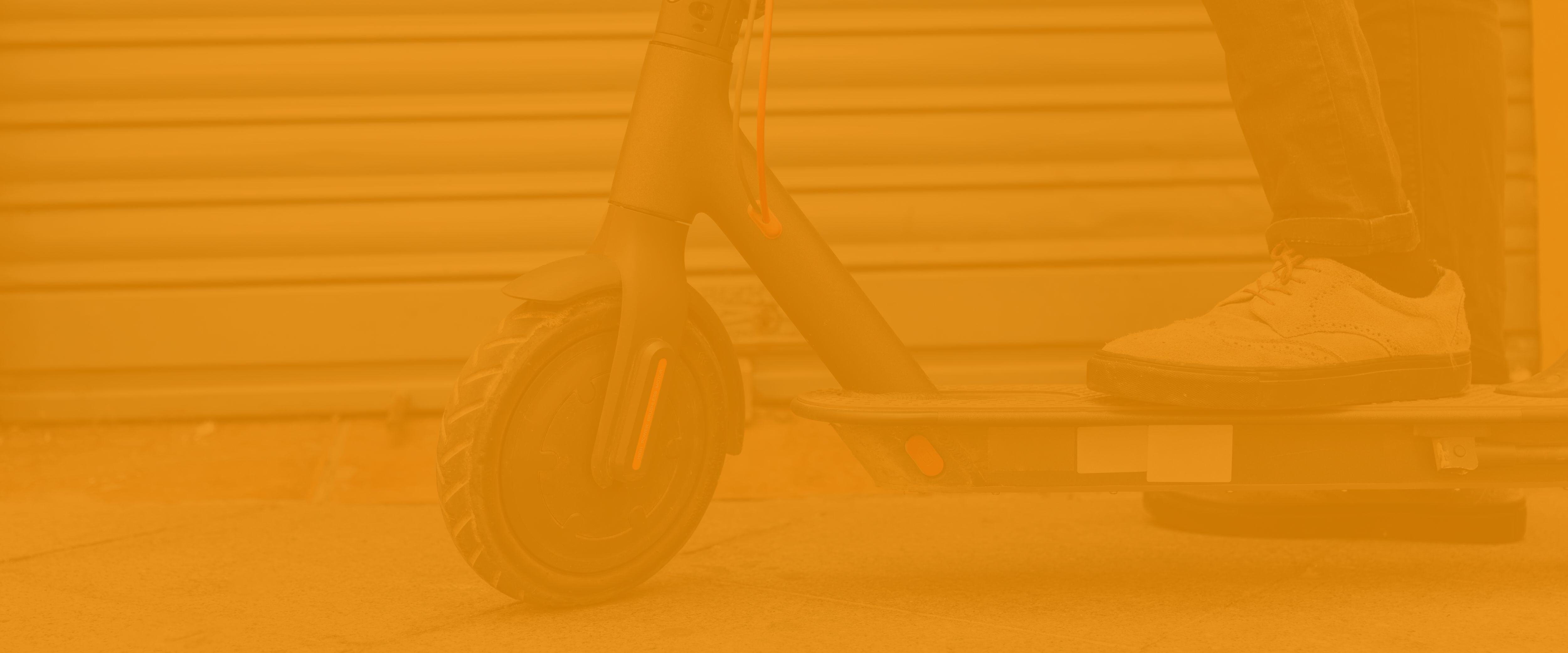
E-bikes and E-scooters
E-bikes and E-scooters are becoming increasingly popular - however they can be dangerous if they are not stored safely, or if cheap, imitation chargers and batteries are bought instead of authentic, licensed and tested products. E-bikes use lithium-ion batteries which can cause serious, rapidly growing fires that are hard to put out and generate toxic fumes which can cause injury or death.
Top tips for e-bike/e-scooter purchase
- Always buy a brand-new e-bike or e-scooter from a reputable seller. Be wary of buying a second-hand, refurbished or converted e-bike/e-scooter because it may not meet the necessary safety standards.
- Don’t make any modifications to your e-bike/e-scooter. Any changes you make to the motor or battery will likely be unsafe and increase the chances of it malfunctioning and causing a serious fire. Any e-bike modified to go faster than 15.5mph will be deemed an unregistered motorbike under UK law, so don’t change the maximum speed to which it has been purposely limited.
- Similarly, be wary of converting a traditional push bike into an e-bike by adding your own motor.
- Don’t be tempted to buy cheaper battery packs or chargers online from non-authorised, non-official manufacturers – use reputable suppliers who will sell you a genuine, rigorously-tested product.
- Once you’ve bought your e-bike, register it with the manufacturer so that you are easily contactable if they need to put out a safety alert or product recall.
Looking after the battery
- You need to be careful with the battery in your e-bike:
- Once it has reached full charge, you need to unplug it. Don’t leave it charging for longer than it needs, and don’t leave it on charge overnight or
while you’re out. - Check the instruction manual to see how long it takes to get back up to 100% charge and make sure you take it off charge when it’s finished.
- If you’ve been using your e-bike for a sustained period, the battery will likely be hot. Let it cool down before plugging it in to charge.
- Batteries shouldn’t be exposed to extreme temperatures.
- Keep batteries out of direct sunlight.
Where to store your e-bike/e-scooter
It can be extremely dangerous to store e-bikes and e-scooters indoors because the lithium-ion batteries used to power them can get very hot while charging and could explode, causing catastrophic house fires. If you live in a block of flats, you must not store your e-bike or e-scooter in a communal area.
Safe spaces for charging
Any storage spaces you have which are separate to your home will be the safest places for charging. It’s a good idea to install a heat alarm wherever you’re going to be storing and charging
your e-bike or e-scooter. A couple of good options are:
- Garage.
- In a shed located at least six metres away from your home or your neighbours home.
Where (and when) you shouldn’t charge it
- Don’t charge it in a hallway, entrance way, or near an exit.
- Don’t block your escape routes, e.g. stairs, doorways, near front door or back door.
- Never leave it to charge unattended.
- Don’t charge it while you are asleep.
- Don’t charge it if you haven’t fitted a heat alarm or smoke alarm in the room where you’re charging it.
Warning signs for fire risk
- Heat - It’s normal for batteries to generate some heat when charging or in use, but if it feels extremely hot to the touch, it may be defective and at risk of fire, so stop charging it immediately.
- Bulging, lumps and leaks - A battery bulging or swelling out of shape is a common sign of it failing. You should stop using it immediately. The same applies if there is any type of lump or leak from the device.
- Noise - Failing lithium batteries have been reported to make hissing or cracking sounds.
- Smell - A strong or unusual smell (which could be toxic) from the battery could be a sign that it’s failing.
- Performance - Failure to fully charge, or longer charge times, can be a sign that your battery is failing.
- Smoke - If your battery or device is smoking, a fire has already started. Raise the alarm, get out, stay out and call 999 immediately.
Disposing of a lithium battery
If you need to dispose of a damaged or end-of-life battery, do not dispose of it in your household waste or normal recycling. These batteries can cause fires in bin lorries and at recycling and
waste centres. The manufacturer or importer of your e-bike or scooter must offer a free take-back service for waste battery packs. Contact them for details or ask the retailer where you bought it. Alternatively, check with your local authority for suitable battery recycling arrangements in your area.
